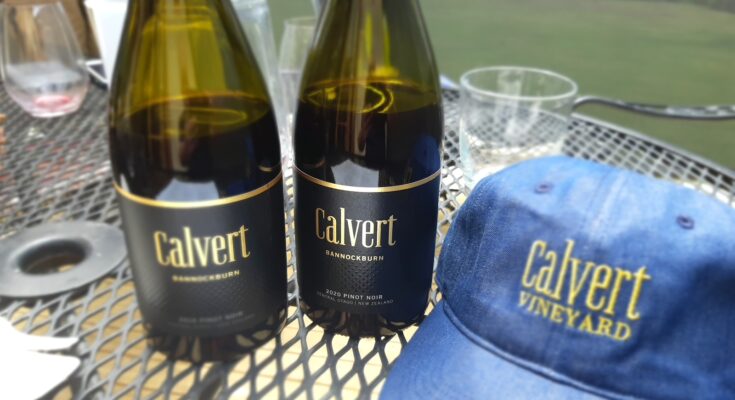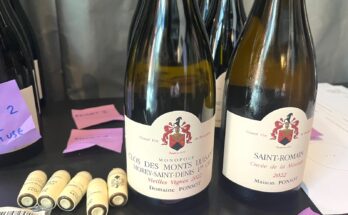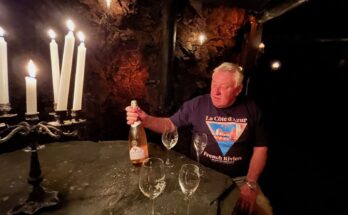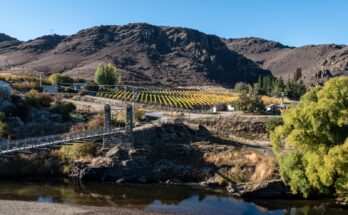We are staying at the Calvert Vineyard, and it seems like the perfect opportunity to not only walk the vineyard, but sit down with owner, Owen Calvert, and winemaker Sarah Burton to look at a couple of vintages of the wine that bears the owner, and vineyards name. We start by re-capping the story that led to this place existing. We talked through this – after a great tasting in Auckland- in a Q&A article from back in mid 2021 – https://winefolio.co.nz/?p=3975.
Owen Calvert: We bought the original block which was out the front of us here, as bare land in 1989, and then bought two other parcels on the side and right down the front side. At one stage there was 40 hectares here. But I’ve done some restructuring over the last 10-15 years, and back down to twenty. We did our first planting in 1999, which was done by Robin Dicey, and in early 2001 Nigel and Blair approached me and said “well you’re going to be starting to produce, so what are you planning to do with the grapes?” And my reply was “I’m looking for different options” and of course we went into an arrangement with them to both manage this block, and then develop another block on the other side. Which is now the Felton Road Calvert Block.
So Felton Road had it, and in 2003 converted it to organic, which I feel is one of the best things I’ve done. And my gratitude to the Felton Road team for facilitating that. And then in 2006 we entered into a three-way agreement with Craggy Range and Pyramid Valley, when the whole nine hectares came into production. It was more than Felton Road wanted, so about 50% of the grapes went to them, 40% to Craggy, and 10% to Pyramid Valley. That arrangement continued through to 2013.
WineFolio: Of that period where different winemakers were making wines off your block – did you have a personal favourite from that time?
OC: Not a favourite, no. I loved them all. They did reflect different styles. And that was the whole point – having the fruit equitable. It wasn’t a case of Felton Road taking this, Craggy taking that… we tried to divide it up by cultivar, so that their share was proportionate across the vineyard. And they all got the same ingredients.
WF: Was that something that you intentionally sought to do – thought it would be an interesting project?
OC: No, it was really, again, Blair and Nigel who facilitated that. Another reason to be grateful for that collaboration. They recognise the value in the property and were very happy to do that.
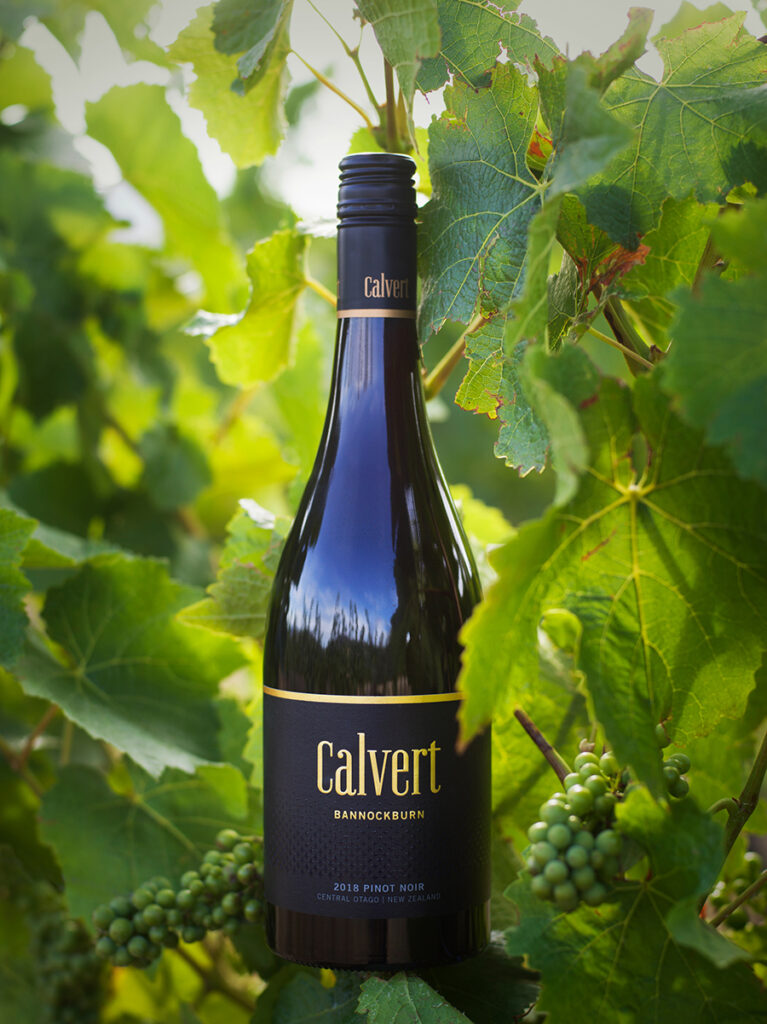
WF: Is there any one thing that you look back and at, and would have chosen not do?
OC: We grafted some Pinot onto Chardonnay and Riesling vines, and that hasn’t really worked out. I think my situation has been kind of different, because I’ve been based overseas during the period of the development. That has influenced how the property has evolved. If I was here I think things would have moved faster. The one thing I should have done more of? Buy more land on Felton Road! Back in 1989 it was a gravel road and only two residences on the road. This land was all in lucerne – a hay paddock.
In 2018 we negotiated a lease with Cloudy Bay and see if we could buy back – which they were totally fine about. So we get about 10% of the production at the moment – three tonnes out of twenty five. Theirs is shipped up to Marlborough. We take from two clones on rows that are side by side, every year. 10/5 and 115 clones.
Sarah Burton: It is six to eight rows in total per year, depending on the yield. We prefer to use two 1.5 tonne fermenters, because anything below 1.5 tonne is challenging with the kinetics of fermentation. It changes it a lot, and also what we’ve pre-purchased barrels for. The ’19 is what you would have had at the Glengarry tasting in 2021 I think. The first wine that we released was the 2018, and the 2019 is current release. They are made the same way every year. All hand harvested in the vineyard here, and we have had them made at Aurum, but it will now be at Carrick. I know Rosie from my time in Marlborough.
Two different ferments – separate clones – one in each, and in the 2021 I put them together to try and balance out the acidity. One drops out acidity really easily, and one retains it, but it didn’t really work! Last year we also tried picking one clone a week earlier than the other one, and in that situation we will ferment separately again. Roughly 25% whole bunch, and on skins anywhere from 22 to 25 days. Eight or nine barrels. Nine this year. So we’re not talking large volumes.
WF: And your whole bunch decisions would be based on the season?
SB: The season, and the health. This area hasn’t seen any disease for a long time. The grapes at harvest are like cartoon bunches – so tight and complete. When I worked up in Marlborough we’d get Calvert fruit in and I’d pick up the bunches and say “Oh come on – who grew this?!”
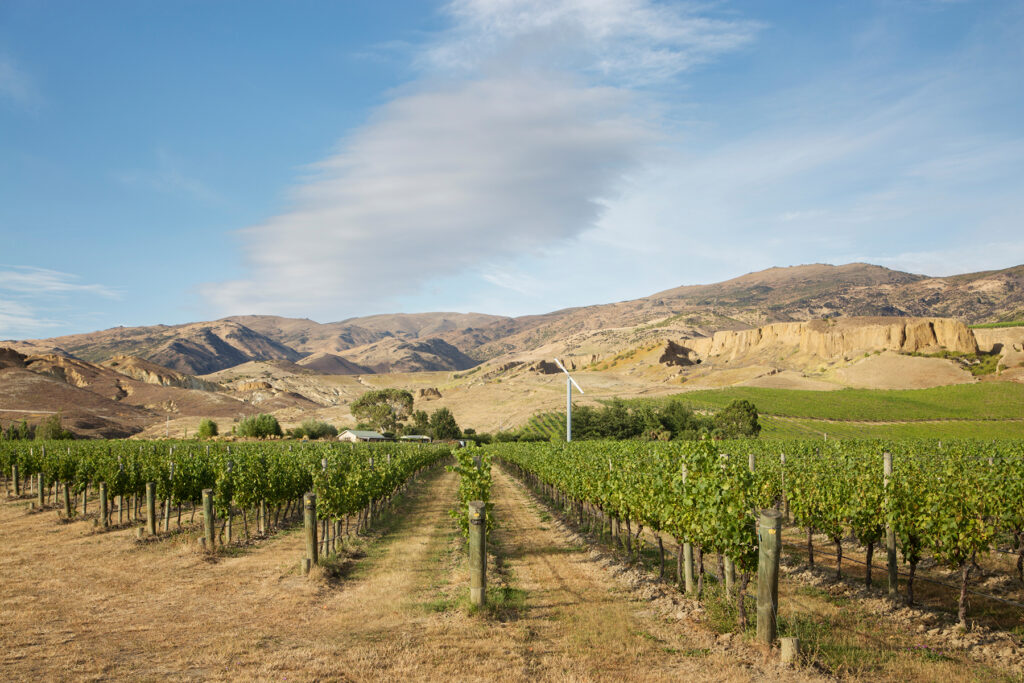
After we press it off it goes directly to barrel, and depending on the year it will be about 25% new oak. I’d like to lower that but it is challenging. We were talking about it yesterday – if I only order one barrel to bring the percentage down, but then the crop is high – because it was a bit variable in the beginning – it is a problem. 24 days on skins for this wine, and 15 months in barrel – the 2019.
WF: Is your process relatively slow then – you’re in no rush?
SB: Yes, but also being conscious of the fact that it’s all natural, wild or indigenous. It does matter what winery you’re making wine at. Temperature control is a massive part of it. We just have two plastic fermenters, so no temperature control per se – it’s just whatever room it is in. Next year for example we think we can chill it, but we’re not sure. We’ll pick it as early as we can to keep it cooler. Temperature control is critical in winemaking. In somewhere like Germany they would just put it outside because that would be cold enough, but even the day you’re making the wine makes a difference.
This is the 2020 which should be released in March. We work with Vintners, who have been amazing for us. The majority goes on premise but there’s a few wine shops in Auckland that have it. We’ve been at a level where we’ve sustained the growth nicely. 2019 was a classic Central Otago year – quite cool – 2020 ripened at the same period but it had a lot more overcast days in the season which affected the grapes structure – with the UV light.
What is fun about this project is that it really is quite simple winemaking and hopefully just a straight reflection of the season, just using the same fruit from the same site every year. I keep it as simple as possible. First of all you have to understand the vineyard, when you first start. The two clones that I work with – neither of those are my favourite clones, but I’ve really learnt to enjoy them. I think 115 by itself is a bit insipid, flat and floral, but together with the stronger 10/5 they really work well. I’d love to get some Clone 5 in there. But this is some of the oldest vines around.
WF: It’s funny, because I was literally talking to Curt as we drove through the gate about the Felton Road Celebration of 25 years, which I didn’t get invited to – and I’d said to him that the last Celebration I had attended was Kumeu River – and that was 75 years. And then you’ve something like Babich that is over a hundred years… and Soljans are now onto their fifth generation of family in the business. So it does seem quite quick to have got to go to be so good?
SB: I think it is the soil and the weather. It is great for growing anything. Look at the peonies!
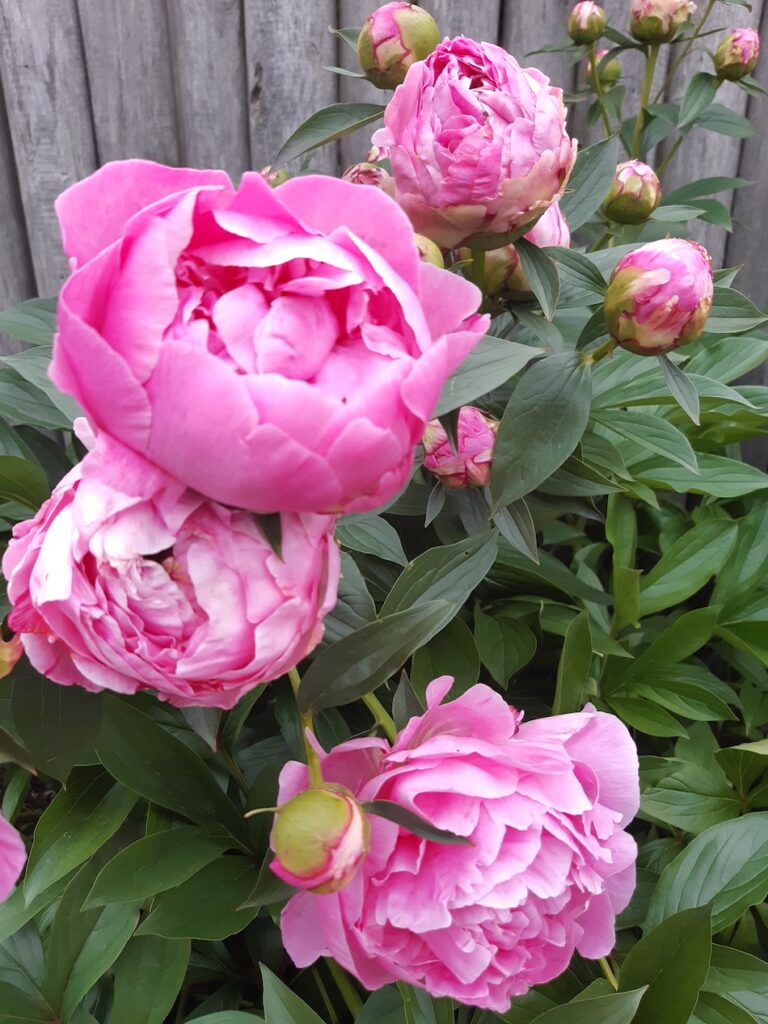
WF: We were at the Cardona Pub on the way over from the airport to Wanaka, and the gardens there are really good – even at Cromwell Old Town, someone has put in some care for those plants – with the old roses and peonies! Auckland people would be agog at those flowers! I wonder just how good the wines are going to be. To be this good within two generations, and I suppose the best wines will be made by our children’s children.
SB: People had been experimenting with lots of things and I think that will simmer down because people will find their groove. Find the barrels that suit their wines, and the way they want to viticulture and things. They’ll always progress, but maybe be more stable.
OC: There were only a handful of people, so they had to collaborate. They came in with wine experience, and then a cluster of farmers said ‘let’s give that a try’ as they had land here. Olssens had no viticultural experience, but he decided he wanted to do it. People will help out if you need it.
WF: And I assume you are reasonably free to make the wine the way that you want it to be – rather than any great commercial concerns?
SB: I’m making the wines the same to look the same. I’m just making them in a similar style. It is more a reflection of the fruit. It’s more interesting if they’re different.
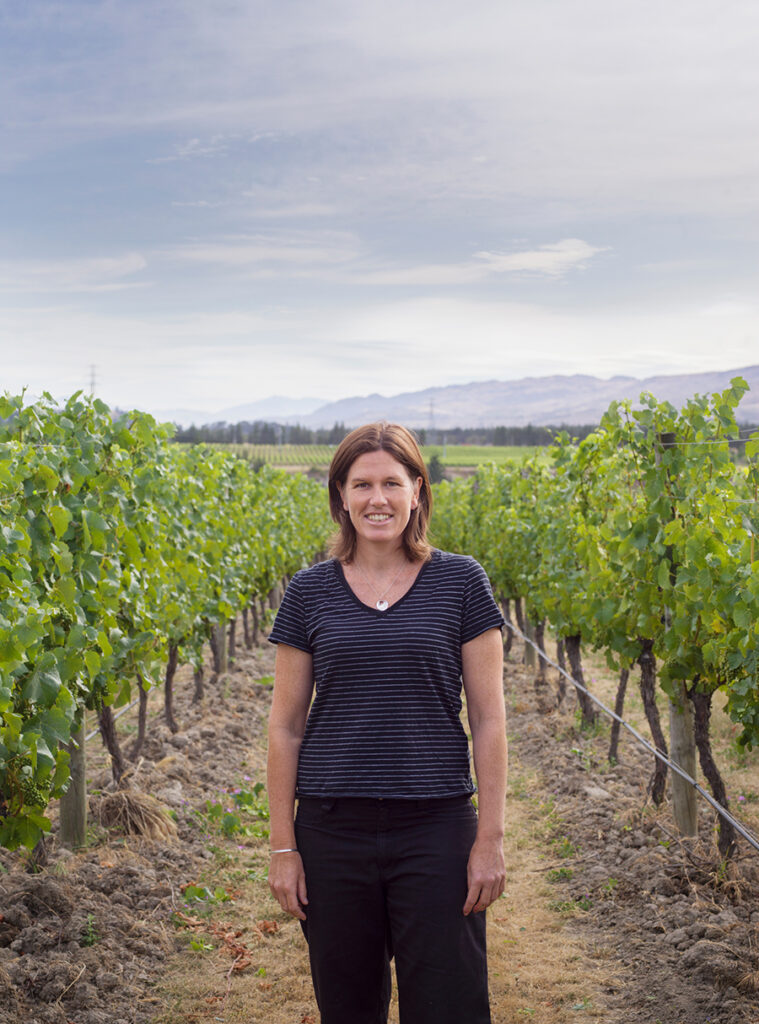
OC: What’s been fascinating to me is seeing the evolution of the Cromwell basin in those two and a half decades. When I bought land on Felton Road it was a gravel road, and you’d see maybe eight cars a day go up and down. Even in the early 2000s it was pretty rural, but then the wines started to get some recognition. In 2000 there was only one place in Cromwell that you could buy a cappuccino. And it was not a good cappuccino.
WF: One of the reasons I invited Curt along on this trip is because he hasn’t been here for a long time, so it is interesting to him to see what has changed.
Curt Thomas: Back in the day, we used to do the Wine Options contests, and one of the great things about those is that to get any good at it, you have to practise! I can remember serving a wine to my little group, and one of the questions was “Is this from Hawke’s Bay, Marlborough or Central Otago?” And people looked at me and laughed! They said “Central Otago?!” That was something like a 1987 Pinot Gris, so we are talking a long time ago. When I was last here Bannockburn didn’t exist. Bendigo didn’t exist – as wine regions. It’s changed out of sight.
WF: And I guess the plans for Calvert Pinot Noir is not to get any bigger?
AC: Not in the short term. I’m keeping options open. We’ve got to figure out the business model, and if we can up the retail component that would be good. We’ve only go the one wine to show though, but we could look for other fruit, to diversify a bit. Sales are through the website at the moment.
With tourism, if you do an activity – it is often enhanced by a food, or coffee, or wine offering to go with that activity. It’s about enhancing it into more of an experience. If you go tramping and you take a bottle of wine with you – and to some people having a bottle of wine on top of a mountain is glorious. You can to a place and look at it, but if there’s a chance to stop and have a coffee or a wine – you sit down, you start chatting and you interact. I took a group up to the top of Duffer’s Saddle and we could have gone up and just walked to the top and had a look and took photos… but I took some coffee and muffins, and it made it more of event.
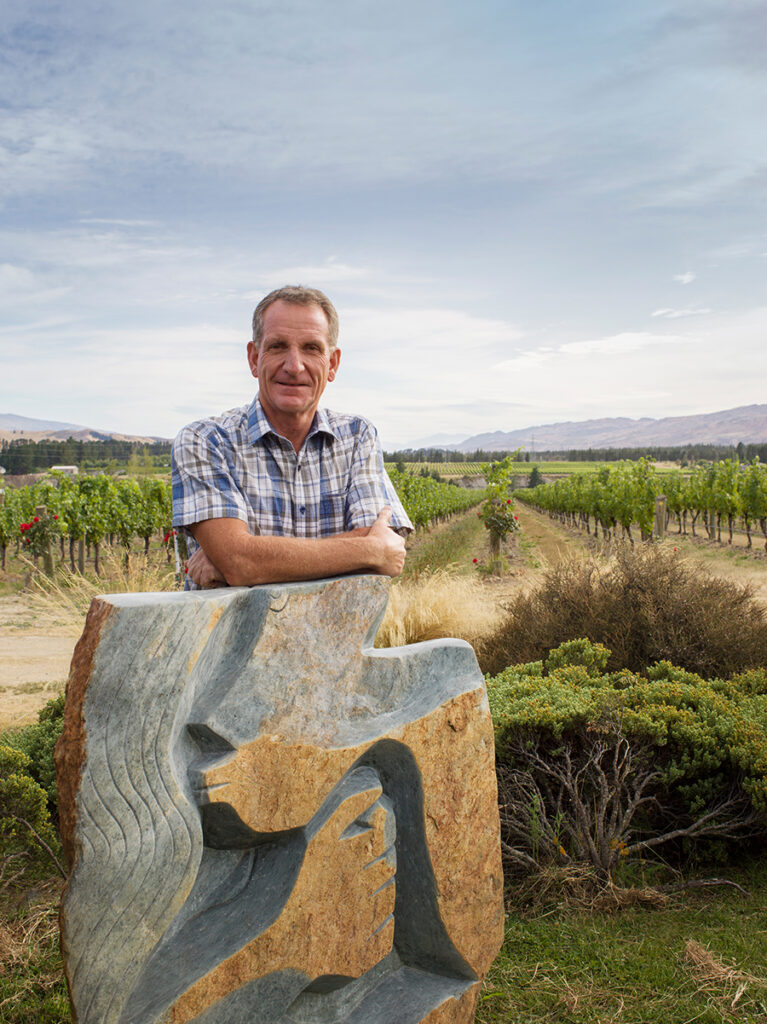
How we expand depends on the few other projects we’ve got on the go here. We’re doing the Air BnB and that’s working out well. When you see the property if we go for a walk – there’s an area down here – Central Park – and we’re opening that up for weddings and have our first booking in January. And other events too – like a Bannockburn Food & Wine Festival. Bannockburn is probably big enough to do one now.
We’re also going to be putting a coffee cart up on the road here; because tourism, with the bike trail that goes past our gate, and is destined to go through to Gibbston. And there are going to lots of other point-to-point trails.
One of the bike hire operators is looking to set up a hub here, and their idea is to have fifty cyclists coming through every day.
We’re directly opposite the Sluicings Walkway and when I drove in the other day there were twenty cars in the car park there. The other thing I’ve got in mind, and have started the process, is to set up a glamping site – about six tents – down by the river. That links in to the property, to leverage what we’ve got.
WF: You’ll need more wine! Have to have a rosé for the tourists!
SB: I actually would love to make a rosé! I just need to talk to Owen, and he’s only just got back from Bangladesh.

